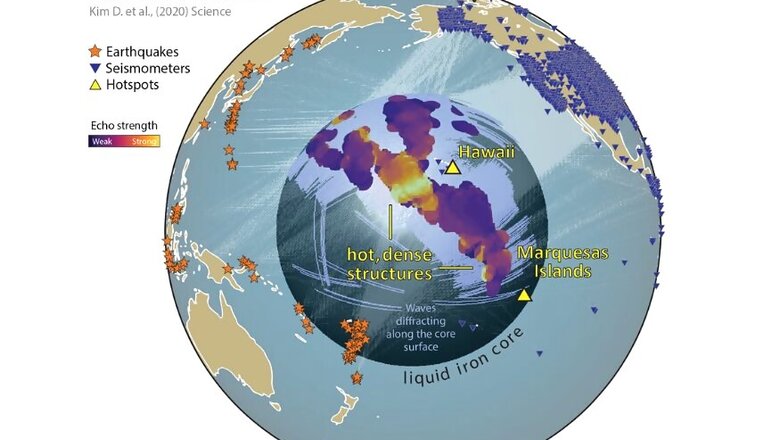
views
It turns out that we don’t know everything about the core of the Earth, contrary to the assumption that we know it all. Scientists have discovered that there are giant structures around 2900 kilometers beneath the surface of the Earth. These previously undiscovered structures sit at the boundary of the Earth’s molten core and solid mantle. It is estimated that these structures are about 1000 kilometers in diameter and about 25 kilometers in depth.
This discovery comes after researchers from the University of Maryland in the US analyzed data from 7000 recorded earthquakes, including major earthquakes, recorded in the Pacific Ocean region between 1990 and 2018. They discovered what they now call an ultra-low velocity (ULV) zone, where seismic waves pass through at slower velocities. Yet, scientists are unsure what the structures are made of and their exact layout. For this, the scientists used a machine learning algorithm called Sequencer, developed by scientists from the Johns Hopkins University and Tel Aviv University, who are co-authors. The study has been published in the June 12, 2020, issue of the journal Science.
The earthquakes that were of magnitude 6.5 or higher and deeper than 200 kilometers below the surface of the Earth generated echoes as they traveled across the previously undiscovered structures. These are called shear waves, and these were similar across multiple earthquakes, which distinguished them from random noise.
“By looking at thousands of core-mantle boundary echoes at once, instead of focusing on a few at a time, as is usually done, we have gotten a totally new perspective,” said Doyeon Kim, a postdoctoral fellow in the UMD Department of Geology and the lead author of the paper. “This is showing us that the core-mantle boundary region has lots of structures that can produce these echoes, and that was something we didn’t realize before because we only had a narrow view.”
The scientists also say that a ULV zone previously thought to be below the Hawaiian islands, is much larger than earlier believed to be. “We were surprised to find such a big feature beneath the Marquesas Islands that we didn’t even know existed before,” says an associate professor of geology at UMD and a co-author of the study. “This is really exciting, because it shows how the Sequencer algorithm can help us to contextualize seismogram data across the globe in a way we couldn’t before.”

















Comments
0 comment